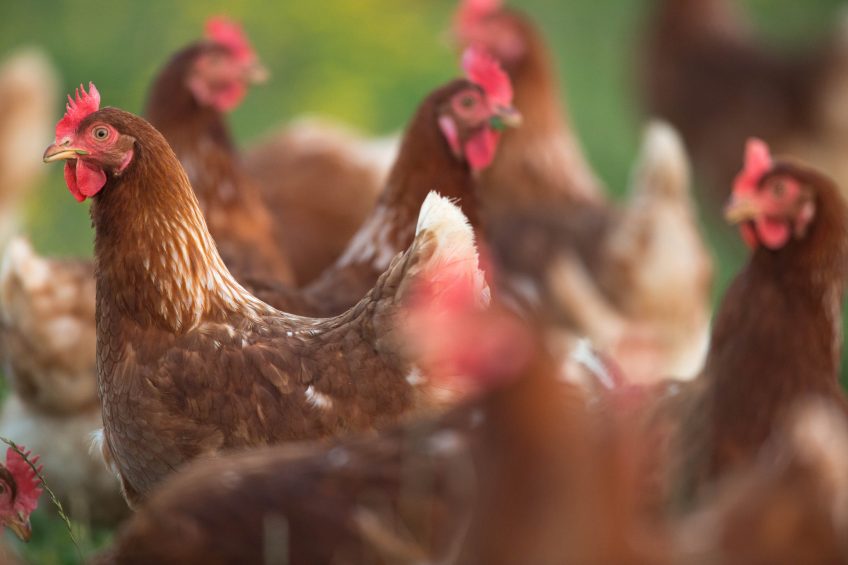Management tips to stop feather pecking

The UK branch of the World’s Poultry Science Association held its annual conference in Cambridge this summer. Scientists looked at poultry feathers and skin – the past, present and future of poultry integument.
Management risk factors and genetic influences have an effect on feather pecking, according to the University of Bristol’s Christine Nicol.
Professor Nicol says high stress levels in parent flocks, poor litter quality, absence of perches, frequent diets changes and high sound levels during the rearing period are all factors that increase the risk of severe feather pecking (SFP).
During lay, the risk of SFP can be greatly increased by feeding pelleted diets that are eaten quickly and by the provision of limited foraging opportunities.
She adds that studies of gene expression in birds with a high tendency to peck revealed associations with genes concerned with nutrient absorption and the regulation of glucose homeostasis.
Severe pecking accompanied by feather eating
Low amino acid, protein and fibre levels are also linked to SFP with severe pecking also often accompanied by feather eating, which may be one way that birds can obtain additional fibre in their diets.
Additional risk factors for SFP in adult birds include limited foraging and exploratory opportunities, litter restriction practices, limited use of the range (in free-range systems), high indoor light intensity and poor health.
Thea van Niekerk, from the Wageningen Livestock Research centre, Netherlands, adds prevention is most important as once feather pecking begins, the behaviour is very hard to stop.
Ms van Niekerk explains that optimising rearing conditions to prevent injurious pecking was the first step: “The most important strategy in rear is a continuous presence of good substrate to stimulate foraging behaviour and to teach the pullets to direct their pecking towards the litter.”
She said any stressor can be a trigger for injurious pecking, so management must focus on preventing stressful events, such as changes in housing conditions (transition from rear to lay, climate) and management (e.g. light, feed, access to range) and also suboptimal health, especially parasites and compromised intestinal health.
Genetic solution
Esther Ellen and Piter Bijima, of Wageningen University Research Animal Breeding and Genomics centre, assessed genetic solutions to injurious pecking.
They argued that, while behavioural observations can be used to select against feather pecking, they were expensive, time consuming and difficult to apply in animal breeding. Instead, a solution could come from quantitative genetic methods that took into account both the direct (DGE, victim effect) and indirect genetic effect (IGE, actor effect).
“For the survival time, we found that the victim effect contributes 35-87% of total heritable variation. Together, they explain 15-26% of total phenotypic variation in survival time. Therefore, it is important to use a selection method that take both DGE and IGE into account. Using genomic selection can be a promising tool to reduce mortality due to feather pecking,” they added.
In a recent study, selection based on relatives kept in family groups was used to reduce mortality due to feather pecking in a purebred White Leghorn layer line. 6 generations were selected. For each generation, individually housed selection candidates were selected based on survival time of relatives kept in family groups. Relatives had intact beaks and were kept in four or five bird family cages with generations kept at 3 different locations.
Genetic variances
To quantify potential responses to genomic selection, the study combined estimated genetic variances for DGE and IGE obtained in previous studies with selection-index calculations. Different breeding programme designs were compared to identify the optimum genomic selection strategy against mortality due to feather pecking.
The trial found that selection against mortality due to feather pecking was feasible but that feather pecking was very sensitive to changes in the environment.
Model predictions show that genomic selection combined with a crossbred reference population consisting of small family groups yields a rapid reduction of mortality due to FP but was more of a challenge in large groups.
Professor Nicol’s joint paper with Dr Claire Weeks, ‘Provision of a resource package reduces feather pecking and improves ranging distribution on free-range layer farms,’ was published in the Applied Animal Behaviour Science in July.













